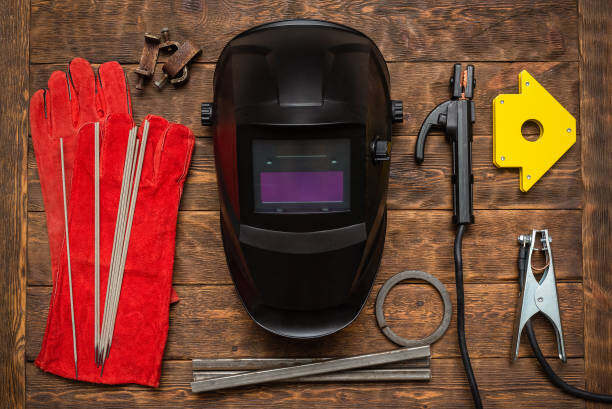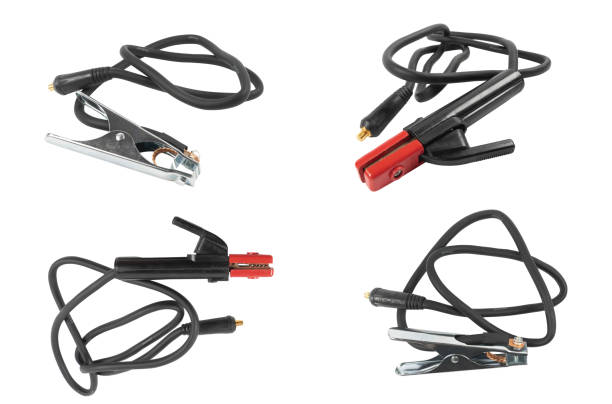Welding is a critical process in various industries, and the efficiency and safety of this process heavily depend on the quality of the welding equipment used. One of the most crucial components of welding equipment is the welding cable. Selecting the appropriate size of welding cable is essential for ensuring optimal performance and safety. In this article, we will explore the characteristics of welding cables, the factors influencing their size, and how to choose the right cable for your welding needs.

I. What are Welding Cables?
Welding cables serve as the conductors for the electric current that powers welding equipment. They are typically made up of multiple fine copper strands, which are encased in a durable, non-conductive outer sheath. This outer layer is often made from a type of synthetic or natural rubber, available in various colors. The flexibility provided by the fine copper strands allows welding cables to be more maneuverable compared to other types of conductors. Additionally, the insulating sheath is designed to withstand the rigors of welding environments, including exposure to rough surfaces and repetitive movement.

II. Importance of Cable Size
As the level of electric current increases—measured in amperes (A)—the diameter of the welding cable and the cross-sectional area of the copper strands must also increase. This concept can be likened to the flow of water through a hose: to transport a larger volume of water, a wider hose is necessary. For instance, a small garden hose is sufficient for watering plants, while a fire department uses larger hoses to deliver water at high volumes.
III. Current Capacity of Welding Cables
The current-carrying capacity of a welding cable, also known as its ampacity, refers to the maximum amount of electric current the cable can safely conduct. Several factors influence this capacity:
Cross-sectional Area: The larger the cross-sectional area of the cable, the more current it can carry.
Length of the Cable: Shorter cables can carry more current than longer cables of the same diameter due to reduced resistance.
Resistance Rating: The ohmic value, or resistance rating, of the cable affects its ability to conduct electricity.
Insulation Material Temperature Rating: The temperature rating of the insulation material plays a critical role in determining how much current the cable can handle without overheating.
Ambient Temperature: Higher ambient temperatures can reduce the cable's ability to dissipate heat, thus lowering its current capacity.
Welding cables typically have a rated conductor temperature of 75°C (167°F), 90°C (194°F), or 105°C (221°F). While copper can withstand high temperatures generated by increased amperage without damage, the insulation layer can melt if subjected to excessive heat. The rated ambient temperature for welding cables is generally around 30°C (86°F). If the ambient temperature is higher, it may further limit the cable's ability to cool down, reducing its current-carrying capacity.
IV. The Risks of Using Incorrect Cable Sizes
Using a welding cable that is too small for the current level can lead to overheating, which poses several risks:
Fire Hazard: Overheating can ignite surrounding materials, leading to potential fires.
Cable Damage: Excessive heat can damage the cable, causing it to break down and fail.
Shock Hazard: Damaged insulation can lead to electrical shocks, posing a significant safety risk.
Conversely, using a cable that is excessively large for the current level does not improve efficiency. Larger cables are typically more expensive due to the increased amount of copper used, making them less cost-effective for smaller applications.
V. Cable Sizing Standards
Welding cables are classified by the American Wire Gauge (AWG) system, where smaller gauge numbers indicate larger diameters. For example, a #4 AWG cable is larger than a #12 AWG cable. Cables larger than #1 are often denoted as zero (0), with multiple zeros indicating larger sizes (e.g., 1/0 is pronounced "one aught," 2/0 is "two aught," and so on). Common sizes for welding cables range from #4 to #4/0.
In metric measurements, cable sizes are typically expressed in square millimeters (mm²), representing the cross-sectional area of the wire. Understanding both AWG and metric sizes is essential for selecting the appropriate welding cable for your needs.
VI. Determining the Correct Cable Size
When selecting the right welding cable size for your equipment, consider the following three key factors:
Total Length of the Welding Circuit: The welding circuit encompasses the entire path that the current travels, including the power source, electrode cable, welding clamp (or TIG torch or wire feeder), the arc, work cable, and work clamp. To determine the correct cable size, you must add the total lengths of the electrode cable and work cable.
Amperage Requirements: Check the amperage rating of your welding equipment. This information can often be found on the equipment's nameplate or in the user manual. For example, if your welding machine is rated for 400 amperes, you will need to select a welding cable that can handle that current, factoring in the total length of the circuit mentioned earlier.
Duty Cycle and Work Environment: Consider the duty cycle of your welding machine, which is the percentage of time the welder can operate in 10 minutes without overheating. Higher-duty cycles require cables that can handle prolonged use without excessive heat buildup. Additionally, think about your work environment; factors such as heat, abrasion, and chemical exposure can affect the cable's performance and lifespan.
VII. Example Calculation for Cable Sizing
Let’s say you have a welding machine rated for a maximum output of 400 amperes and a duty cycle of 60%. You plan to run a total cable length of 100 feet (about 30.5 meters). From standard ampacity charts, we find the following:
For 400 amperes and a typical operating distance, a #2/0 AWG cable would be necessary due to its sufficient capacity to handle the current and the potential voltage drop over that distance.
If you require an even longer cable run, say, 150 feet (approximately 45.7 meters), you might want to increase the cable size to minimize voltage drop and maintain performance, choosing a #3/0 AWG instead.
VIII. Maintaining Your Welding Cables
Once you've selected the correct cable size, it is equally important to maintain the cables to ensure safe and efficient operation. Here are some best practices:
Regular Inspection: Regularly check your welding cables for signs of wear and tear, including cracks, cuts, and abrasions. Any defects should be addressed immediately to prevent potential hazards.
Proper Storage: Store cables in a manner that prevents kinks or sharp bends, which can damage the inner conductors. If cables must be stored coiled, ensure they are not tightly wound, as this can lead to electrical resistance and overheating.
Keep Connectors Clean: Ensure that all grounding and electrode cable connectors are clean and free of corrosion. Poor connections can lead to electrical resistance, causing hotspots that could result in cable failure or fire hazards.
Avoid Overloading: Never exceed the recommended amperage for your cable size. Monitor the welding process to ensure the current does not exceed the cable’s rated capacity.
Conclusion
In summary, choosing the right size welding cable is crucial for the safety and efficiency of your welding operations. Understanding the concepts of current capacity, cable sizing standards, and appropriate maintenance can significantly impact the quality of your welds and the longevity of your equipment. By following guidelines for cable selection—considering amperage, length, duty cycle, and the operating environment—you can ensure optimal performance and reduce safety risks.
Related articles:
1. What is Duty Cycle in Welding & How is it Calculated?
2. How to Choose the Correct Welding Torch for Robotic Welding?
3. What Filler Metal to Use in Welding Dissimilar Metals?
4. Welding Torches or Guns Burning Hot (reasons, effects & solutions)
5. Power Sources for Arc Welding: Types and Characteristics





